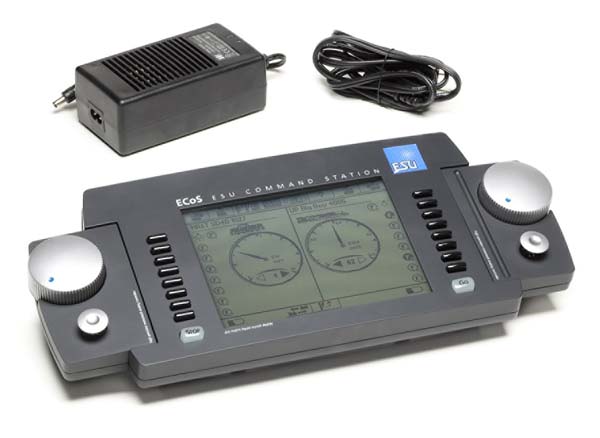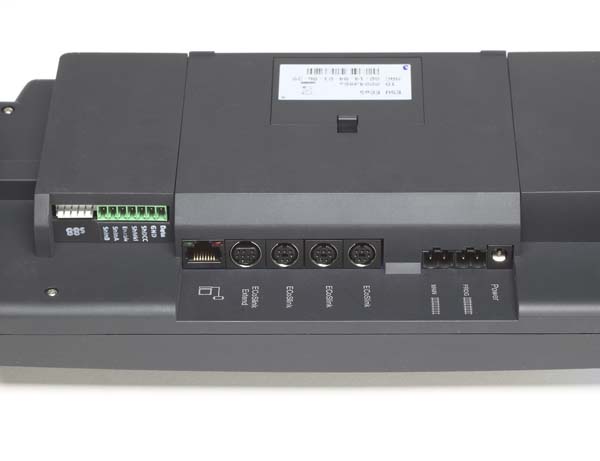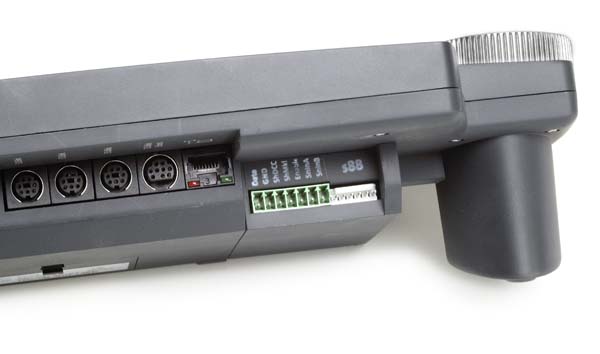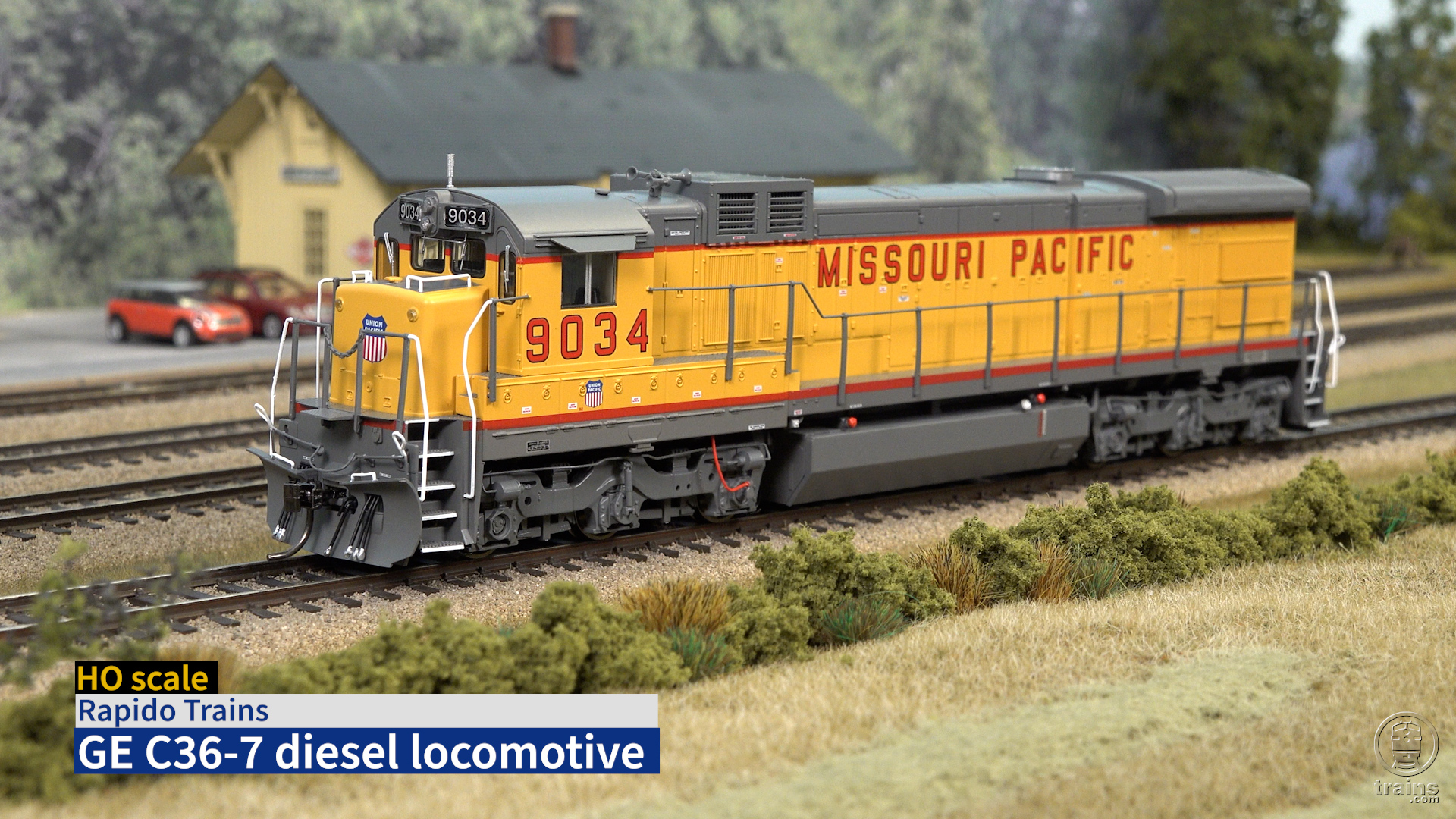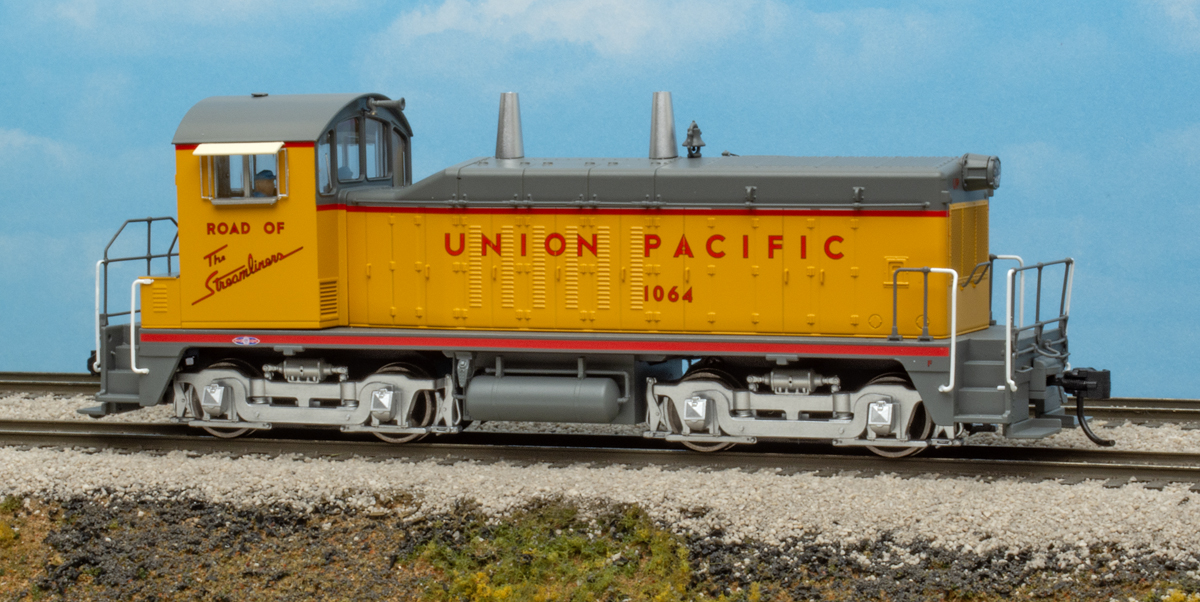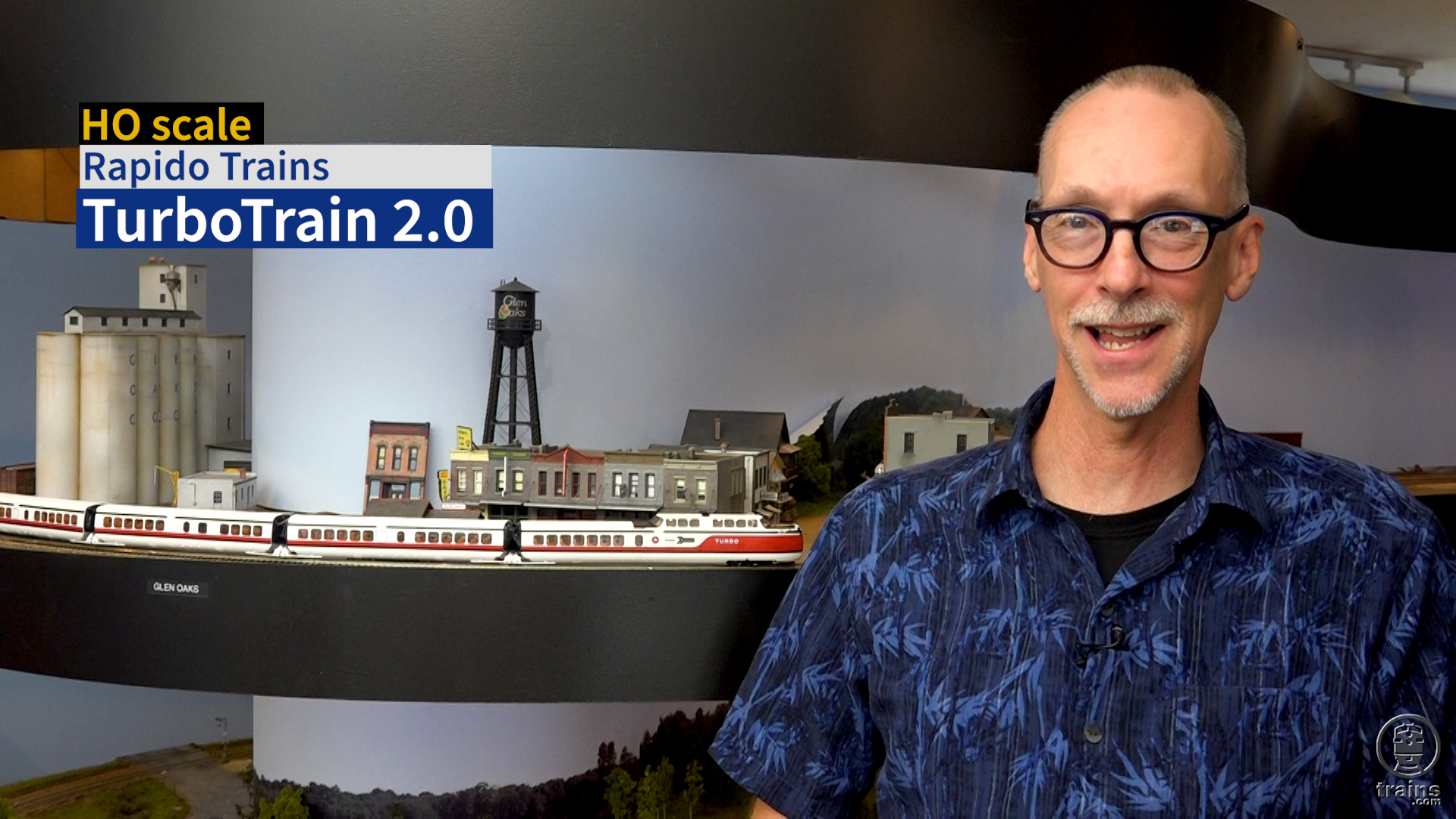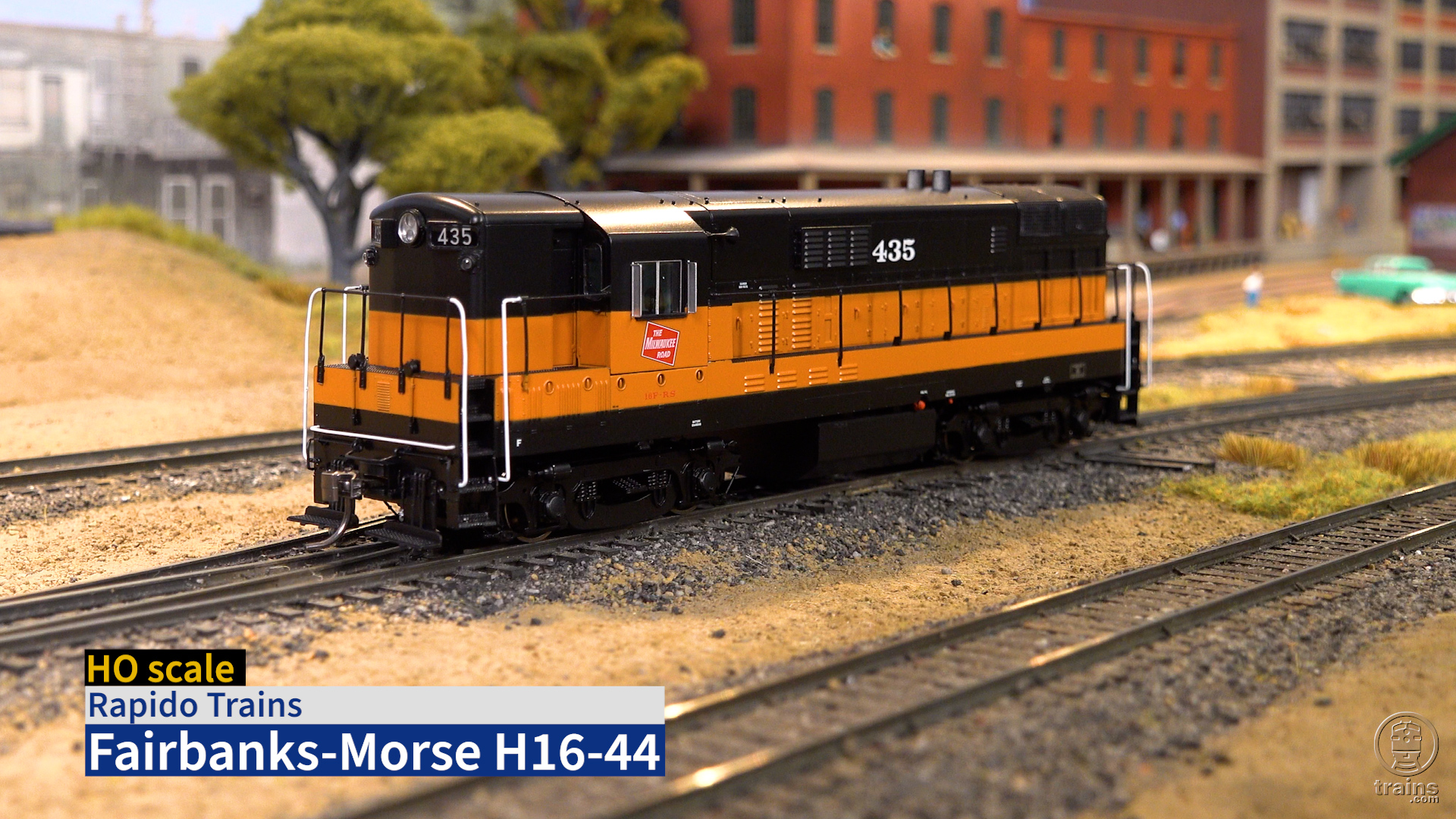A Continental approach. The ECoS is a European-style system, intended for use as the main digital controller and workstation for a layout. The two throttles feature motor-driven speed control knobs with “below zero” reverse (stop the locomotive, then turn the throttle below the stop position to reverse the locomotive) and a small multifunction mushroom-shaped joystick that can be used to select locomotives and activate functions. If you select a locomotive that’s in motion, the controller will advance the throttle to the proper step for a seamless acquisition.
In many ways the ECoS feels like a small, specialized PC workstation. This is a strength and a weakness, from the North American perspective. Operation and programming are simpler with the ECoS than with many DCC handhelds or base stations, both because the display gives you more information and because the powerful system makes tasks simpler. The drawback is that the system doesn’t include a walkaround controller, and the ESU Mobile Control wireless throttle isn’t licensed for use in the United States. You can add a controller from another firm.
In normal operation the LCD touch screen displays the locomotive name and icon, both of which you select, and a speedometer that reads in either speed steps or km/h. The 7″ (diagonal) screen is angled 16 degrees up from horizontal and backlit in white. The monochrome screen is easy to read, though color would make it easier to distinguish different screens and tools.
The system comes with a 90VA outboard power supply; maximum track current is 4.0 amps. I measured the track voltage at 17.2V using an RRampMeter. (ESU has announced a multiprotocol ECoSBOOST digital booster for delivery later this year, and the system will also work with DCC boosters from other manufacturers.) It has several connections, including track power, programming track power, RJ45 Ethernet, 3 ECosLink plugs, S88 track occupancy, and ECoSniffer system input, which can accept the output signal from another independent digital system.
Operation. Despite the system’s power, it’s easy to get started. Adding a locomotive to the system can be done by simply entering its address and your preferred protocol, such as Motorola 28-step or DCC 128-step. The system will give it a name if you don’t enter one. Then select that locomotive and you’re off.
The eight function buttons are large and easy to use, but it took me some time to get used to the small joystick. You can also access up to 20 additional functions on the touch screen.
The system’s capabilities for accessory operation are robust as well. The ECoS maintains a library of 25 accessory panels with up to 16 accessories each, such as signals or turnouts. You can also name routes that can be controlled manually or via the S88-format feedback bus, including eight two-station shuttle routes, each with deceleration intervals.
I also had a few Motorola and mfx format decoders go into the digital equivalent of paralysis. While I wasn’t able to reprogram them using the ECoS, they did revive when tested on a Märklin Central Station. It appears to be a reaction by some decoders to having multiple protocols on the same track, regardless of which multi-protocol system is in use.
An excellent performer. Overall, the system performed very well. I used it to operate locomotives with decoders in DCC, Märklin/Motorola, and mfx formats. The nearly endless expansion possibilities mean that an ECoS user is unlikely to outgrow the system. It’s not quite my dream controller – I wish the throttles were pressure-sensitive levers and that adding a wireless throttle were simpler – but it’s a powerful, intelligently engineered system. As such, it sets the standard for digital multiprotocol controller/workstations.
Price: $699
Manufacturer
ESU LLC
112 Pine Ave. E
P.O. Box 77
Upsala, MN 56384
www.loksound.com
Description: multi-protocol digital command station





